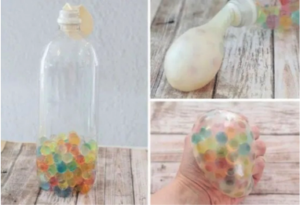Sensory Processing Issues
Does your child have issues invading other’s personal space, and causing another to be frustrated? Or Is your child overly sensitive to certain texture of clothing because it feels too scratchy or stiff? Does your child struggle with textures or smells of certain foods; has extreme meltdowns due to being overwhelmed or easily overloaded?
Your child could be experiencing, Sensory Processing Issues. (SPI) is the way your brain receives and responds to information coming from our five senses, which can cause an individual to experience a sensory overload. SPI interferes with the ability to filter out certain noises that are unimportant, which can be distracting or frustrating.
There are two types of SPI: One is oversensitivity (hypersensitivity), an individual can be overwhelmed by someone chewing or the buzzing of a light overhead. The second is under sensitivity (hyposensitivity), when a child seeks more sensory input such as having the urge to touch things or having the intolerable need to have physical contact or pressure. An example of hyposensitivity is when a child is under sensitive to pain which causes them to play rough and not understand they may be hurting another.
Sensory Processing Issues can interfere with learning for a child, as well as making it difficult to make friends, or being identified as the disruptive child in the classroom.
Suggestions on ways to cope with SPI:
• Deep breathing techniques (deep breath in through the nose, (hold for 5 seconds) Exhale slowly out through your mouth. Imagine you’re blowing out your birthday candles or dandelions.
• Grounding techniques: Name five things you see, name four things you feel, three things you hear, two things you smell and something you taste, to engage each of the five senses.
• Being able to identify and understand your child’s triggers.
• Have a visual schedule on a poster board with plenty of preparation for transitions.
• Creating a “comfort spot” within your home or classroom. Provide calm jar, coloring a picture, tactile object such as: putty, pipe cleaner or soft squishy ball) or sit with a weighted blanket/vest.
Make a Calming Jar:
- 16oz water bottle with water
- Glitter glue (can be bought at the dollar store for a 3 pack)
- Glitter
- Jewels (optional)
- Glue gun (for attaching items to the outside if you would like)

Stress Ball
- Clear or white balloons
- Water-filled beads
- plastic bottle for filling the balloons
- Glitter (optional)

We hope these tips have been helpful for you. Remember, we at Bear Creek Counseling are here to support you in all of your mental health needs, including Sensory Processing Issues. Call us. We can help!